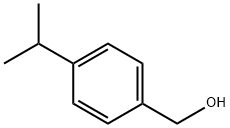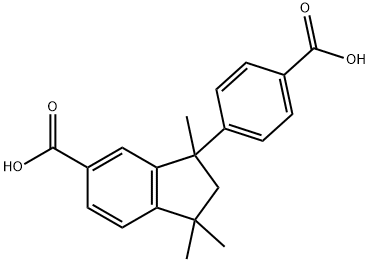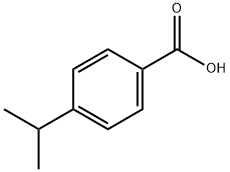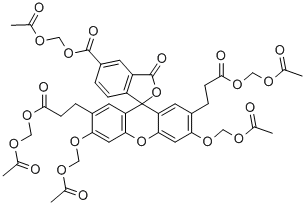4-Isopropylbenzyl alcohol , 97% , 536-60-7
Synonym(s):
Cumic alcohol
CAS NO.:536-60-7
Empirical Formula: C10H14O
Molecular Weight: 150.22
MDL number: MFCD00004663
EINECS: 208-640-4
| Pack Size | Price | Stock | Quantity |
| 1ML | RMB23.20 | In Stock |
|
| 5ML | RMB31.20 | In Stock |
|
| 25ML | RMB118.40 | In Stock |
|
| 100ML | RMB439.20 | In Stock |
|
| 500ML | RMB2063.20 | In Stock |
|
| others | Enquire |
PRODUCT Properties
| Melting point: | 28 °C |
| Boiling point: | 135-136 °C/26 mmHg (lit.) |
| Density | 0.982 g/mL at 25 °C (lit.) |
| FEMA | 2933 | P-ISOPROPYLBENZYL ALCOHOL |
| refractive index | n |
| Flash point: | >230 °F |
| storage temp. | Sealed in dry,Room Temperature |
| solubility | alcohol: miscible |
| form | Liquid |
| pka | 14.48±0.10(Predicted) |
| color | Clear colorless to slightly yellow |
| Odor | at 100.00 %. strong cumin caraway spicy herbal leather |
| Odor Type | spicy |
| biological source | synthetic |
| Merck | 14,2619 |
| JECFA Number | 864 |
| BRN | 636665 |
| LogP | 2.37 |
| CAS DataBase Reference | 536-60-7(CAS DataBase Reference) |
| EPA Substance Registry System | Benzenemethanol, 4-(1-methylethyl)- (536-60-7) |
Description and Uses
p-Isopropylbenzyl alcohol has an intense, persistent, caraway-like odor and an aromatic, burning taste. Prepared from cuminaldehyde with H2 or NH3 under pressure in methanol solution and in the presence of Raney Ni catalyst; or by catalytic reduction of methyl p-isopropy lbenzoate.
4-Isopropylbenzyl alcohol is occasionally used in perfume compositions for its natural and warm-herbaceous-spicy effect, perceptible in the topnote and often through the dryout. Also used in the artistic duplication of certain floral notes, such as Mimosa and Cassie, particularly in connection with Methylionones. Finds some use in flavor compositions, mainly Berry, Fruit, Spice and Liquor flavors. The concentration in the finished product will normally be about 0.5 to 35 ppm.
Safety
| Symbol(GHS) |  GHS07 |
| Signal word | Warning |
| Hazard statements | H302-H315 |
| Precautionary statements | P264-P270-P280-P301+P312-P302+P352-P332+P313 |
| Hazard Codes | Xn |
| Risk Statements | 22-38-36/37/38-20/21/22 |
| Safety Statements | 26-36 |
| WGK Germany | 2 |
| RTECS | GZ7260000 |
| TSCA | Yes |
| HS Code | 29062990 |
| Toxicity | The acute oral LD50 in rats was reported as 1.02 g/kg (0.9-1.14 g/kg) (Moreno, 1973). The acute dermal LD50 in rabbits was reported as 2.5 g/kg (0.5-3.0 g/kg) (Moreno, 1973). |




